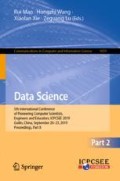Abstract
In order to more easily measure the concentration of solution with the Tyndall phenomenon in the outdoor, a portable instrument using image-processing for collecting and processing images of Tyndall phenomenon is proposed. The software and hardware of light measurement module of the portable instrument are described in this paper, including the selection of the incident light and the image sensor. Then the optical path of the captured picture was extracted and the light intensity value was calculated. Through the standard sample, the linear relationship between the light intensity in the Tyndall phenomenon and the concentration was fitted to determine the concentration of the colloidal liquid to be tested. Theoretical analysis and simulation results show that the method of obtaining the concentration of colloidal liquid by using the relationship between the RGB mean of the image and the light intensity of Tyndall can control the error within 10%, which meets the preliminary test requirements.
Access this chapter
Tax calculation will be finalised at checkout
Purchases are for personal use only
References
Liu, F., Dong, C., Ren, J.: Determination of gold nanoparticles concentration in the solution with fluorescence correlation spectroscopy. J. Anal. Sci. 34(04), 496–500 (2018)
Sclavons, M., Legras, R., Franquinet, P., et al.: Quantification of the maleic anhydride grafted onto polypropylene by chemical and viscosimetric titrations, and FTIR spectroscopy. Polymer 41(6), 1989–1999 (2000)
Qiu, B., Zhahg, H., Xu, Z., et al.: Research progress on analysis of polysaccharides. Sci. Technol. Food Ind. 39(06), 327–333 (2018)
Brun, N., Ponçot, M., Bourson, P.: Raman correlation spectroscopy: a method studying physical properties of polystyrene by the means of multivariate analysis. Chemom. Intell. Lab. Syst. 128, 77–82 (2013)
Qin, X.-L., Zhang, Y., Li, Z.-Y.: Determination of dyeing wastewater by snapshot imaging spectrometer. Chin. J. Anal. Chem. 45(11), 1635–1640 (2017)
Miyazawa, S., Iwasaki, H.: Light scattering from ferroelectric domains in LiTaO3. Mater. Res. Bull. 13(5), 511–518 (1978)
Aspanut, Z., Yamada, T., Lim, L.W., et al.: Light-scattering and turbidimetric detection of silica colloids in size-exclusion chromatography. Anal. Bioanal. Chem. 391(1), 353–359 (2008)
Li, W.-J., Zhang, J., Gu, X.-Y.: Tyndall phenomenon of colloidal sol under different concentrations. Chin. J. Chem. Educ. 37(07), 77–81 (2016)
Gang, Z., Zhi-Jian, X.: Effective measurement of optical density and analysis on its influencing factors. J. Third Mil. Med. Univ. 23(7), 785 (2001)
Song, Y.K., et al.: A comparison of microscopic and spectroscopic identification methods for analysis of microplastics in environmental samples. Mar. Pollut. Bull. 93(1–2), 202–209 (2015)
He, J., Tong, X., Zhao, Y.: Photoresponsive nanogels based on photocontrollable cross-links. Macromolecules 42(13), 4845–4852 (2009)
Xiaohan, X., Guo, X., Shiqun, J., et al.: Design of imaging detection system for fluorescent immune-chromatographic test strip. Chin. J. Lasers 45(04), 287–294 (2018)
Acknowledgment
Development and application of rapid quantitative detection technology for heavy metal-free instruments in water environment (AB17129003).
Author information
Authors and Affiliations
Corresponding author
Editor information
Editors and Affiliations
Rights and permissions
Copyright information
© 2019 Springer Nature Singapore Pte Ltd.
About this paper
Cite this paper
Jiang, C., Zhu, T., Qin, Y. (2019). Study on Measurement of Colloidal Liquid Concentration Based on Tyndall Phenomenon. In: Mao, R., Wang, H., Xie, X., Lu, Z. (eds) Data Science. ICPCSEE 2019. Communications in Computer and Information Science, vol 1059. Springer, Singapore. https://doi.org/10.1007/978-981-15-0121-0_43
Download citation
DOI: https://doi.org/10.1007/978-981-15-0121-0_43
Published:
Publisher Name: Springer, Singapore
Print ISBN: 978-981-15-0120-3
Online ISBN: 978-981-15-0121-0
eBook Packages: Computer ScienceComputer Science (R0)

